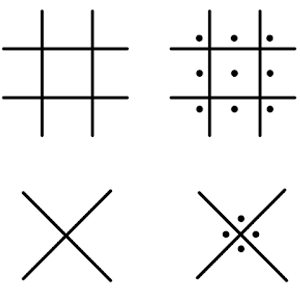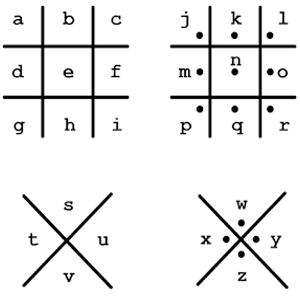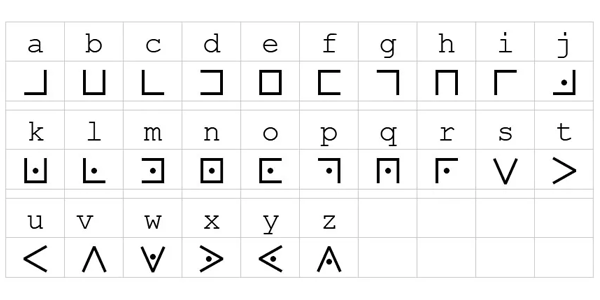Unveiling the Masonic Pigpen Cipher: A Hidden Code of Brotherhood
The “pigpen cipher,” also known as the “masonic cipher” or “Freemason’s cipher,” is a simple substitution cipher that has been associated with Freemasonry, although its historical connection to the fraternity is not well-documented. This cipher involves replacing letters of the alphabet with geometric symbols arranged in a grid or “pigpen” pattern. Each symbol represents a specific letter, allowing for the encoding and decoding of messages. Here’s how the pigpen cipher works:
1. Creating the Cipher Grid
A grid of nine squares is used, with three squares arranged in three rows. Each square contains a combination of dots, lines, or other symbols. The symbols within each square represent letters of the alphabet.
2. Assigning Symbols to Letters
The placement of dots and lines in each square corresponds to specific letters. For instance, the letters A, B, and C might be represented by the upper-left, upper-right, and lower-left squares, respectively. The arrangement of symbols in each square can vary, but the key is consistent.
3. Encoding and Decoding Messages
To encode a message using the pigpen cipher, each letter in the message is replaced by its corresponding symbol in the grid. Spaces and punctuation marks are often left unchanged. To decode a message, the process is reversed: symbols are matched to their corresponding letters based on the cipher key.
The pigpen cipher is relatively straightforward to use and can be a fun way to create coded messages. However, it is not a particularly secure method of encryption, as the key can be easily guessed or deduced through pattern recognition. This cipher was likely never intended for serious secret communication, but rather as a form of amusement or a way to introduce basic cryptography concepts.
While the pigpen cipher is sometimes associated with Freemasonry, its historical connection to the fraternity remains unclear. Some sources suggest that the symbols used in the cipher resemble Masonic symbols, leading to the association. However, there is limited evidence to support a direct link between the pigpen cipher and Freemasonry. Regardless of its origin, the cipher has gained popularity as a curious piece of historical cryptography and a playful tool for encoding messages. Encoding and decoding a message with the Pigpen Cipher is just super fun and easy!
To make the key, create two “tic-tac-toe” grids and two “x” grids, one without dots and one with dots.

Next, fill in the letters of the alphabet from left to right and top to bottom as illustrated below.

How do these grids become our secret message? The shape around each letter becomes the symbol.

The word keystone will become

